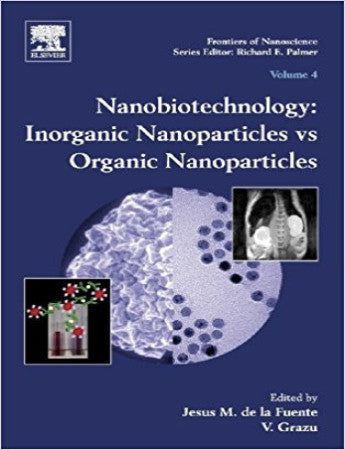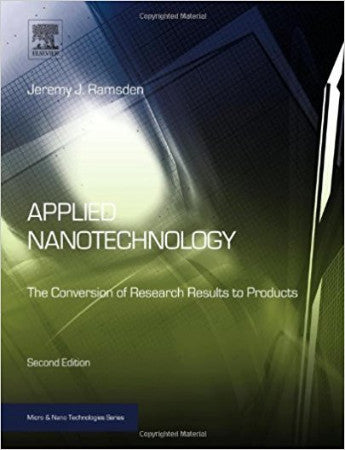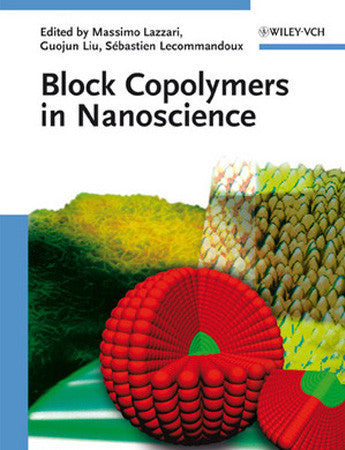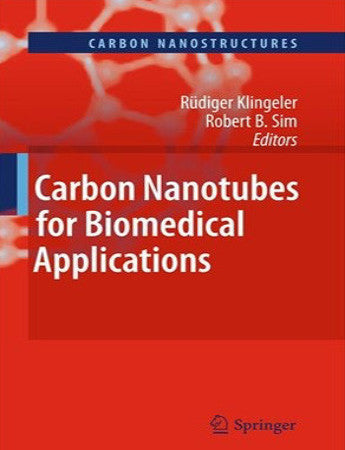Nanobiotechnology
Nanotechnology is considered the next big revolution in medicine and biology. For the past 20 years, research groups have been involved in the development of new applications of novel nanomaterials for biotechnological applications. Nanomaterials are also becoming increasingly important in medical applications, with new drugs and diagnostic tools based on nanotechnology. Every year, hundreds of new ideas using nanomaterials are applied in the development of biosensors. An increasing number of new enterprises are also searching for market opportunities using these technologies.
Nanomaterials for biotechnological applications is a very complex field. Thousands of different nanoparticles could potentially be used for these purposes. Some of them are very different; their synthesis, characterization, and potentiality are very diverse. This book aims to establish a route guide for non-erudite researchers in the field, showing the advantages and disadvantages of the different kind of nanomaterials. Particular attention is given to the differences, advantages, and disadvantages of inorganic nanoparticles versus organic nanoparticles when used for biotechnological applications. A tutorial introduction provides the basis for understanding the subsequent specialized chapters.
Nanomaterials for biotechnological applications is a very complex field. Thousands of different nanoparticles could potentially be used for these purposes. Some of them are very different; their synthesis, characterization, and potentiality are very diverse. This book aims to establish a route guide for non-erudite researchers in the field, showing the advantages and disadvantages of the different kind of nanomaterials. Particular attention is given to the differences, advantages, and disadvantages of inorganic nanoparticles versus organic nanoparticles when used for biotechnological applications. A tutorial introduction provides the basis for understanding the subsequent specialized chapters.
Preface: Jesus M de la Fuente
Chapter 1.-Synthesis and Characterization of Nanoparticles
1.1.- Synthesis and Applications of Gold Nanoparticles, Beatriz Pelaz, and Pablo del Pino
1.2.- Magnetic Nanoparticles, Gorka Salas, R. Costo and M. Puerto Morales
1.3.- Synthesis of inorganic nanocrystals for biological fluorescence imaging, Cécile Philippot, and Peter Reiss
1.4.- Synthesis of Organic Nanoparticles, Gabriela Romero and Sergio E. Moya
1.5.- Synthetic Strategies to create Dendrimers: Advantages and Drawbacks, Macarena Sánchez-Navarro and Javier Rojo
Chapter 2.-Biotechnological Applications
2.1.- Applications of Inorganic Nanoparticles for Biotechnology, Catherine Berry
2.2.- Investigating Nanoparticle Internalization Patterns by Quantitative Correlation Analysis of Microscopy Imaging Data, Raimo Hartmann, Susana Carregal-Romero, Wolfgang J. Parak, Pilar Rivera Gil
2.3 - Organic Nanoparticles, Helene Feracci, Berta Saez Gutierrez, William Hempel, Isabel Segura Gil
Chapter 3.-Applications in Diagnostics and Biosensing
3.1.- Application of Inorganic Nanoparticles for Diagnosis based on MRI, Pedro M Enriquez-Navas and Maria L Garcia-Martin
3.2.- Biosensors Based on Nanoparticles and Electrochemical Detection, Ester Polo, Sara Puertas and Pilar Batalla
3.3.- Magnetic Nanoparticles for Application in Biomedical Sensing, David Alcantara and Lee Josephson
3.4.- Quantum Dot Nanoparticles for In Vitro Sensing, Zongwen Jin and Niko Hildebrandt
Chapter 4.- Nanoparticles for Therapy
4.1.- Hyperthermia using Inorganic Nanoparticles, Pablo del Pino and Beatriz Pelaz
4.2.- Nanocarriers as Nanomedicines: Design Concepts and Recent Advances, Valeria Grazú, Christian Sánchez-Espinel and María Moros
Chapter 5.-Toxicity and Regulation
5.1.- Nanotoxicology, Rosana Simón-Vázquez, Mercedes Peleteiro, Tamara Lozano, Amparo Casal, África González-Fernández
5.2.- Overview of Nanomedicines Regulation in the European Union, Ignasi Gispert
Chapter 1.-Synthesis and Characterization of Nanoparticles
1.1.- Synthesis and Applications of Gold Nanoparticles, Beatriz Pelaz, and Pablo del Pino
1.2.- Magnetic Nanoparticles, Gorka Salas, R. Costo and M. Puerto Morales
1.3.- Synthesis of inorganic nanocrystals for biological fluorescence imaging, Cécile Philippot, and Peter Reiss
1.4.- Synthesis of Organic Nanoparticles, Gabriela Romero and Sergio E. Moya
1.5.- Synthetic Strategies to create Dendrimers: Advantages and Drawbacks, Macarena Sánchez-Navarro and Javier Rojo
Chapter 2.-Biotechnological Applications
2.1.- Applications of Inorganic Nanoparticles for Biotechnology, Catherine Berry
2.2.- Investigating Nanoparticle Internalization Patterns by Quantitative Correlation Analysis of Microscopy Imaging Data, Raimo Hartmann, Susana Carregal-Romero, Wolfgang J. Parak, Pilar Rivera Gil
2.3 - Organic Nanoparticles, Helene Feracci, Berta Saez Gutierrez, William Hempel, Isabel Segura Gil
Chapter 3.-Applications in Diagnostics and Biosensing
3.1.- Application of Inorganic Nanoparticles for Diagnosis based on MRI, Pedro M Enriquez-Navas and Maria L Garcia-Martin
3.2.- Biosensors Based on Nanoparticles and Electrochemical Detection, Ester Polo, Sara Puertas and Pilar Batalla
3.3.- Magnetic Nanoparticles for Application in Biomedical Sensing, David Alcantara and Lee Josephson
3.4.- Quantum Dot Nanoparticles for In Vitro Sensing, Zongwen Jin and Niko Hildebrandt
Chapter 4.- Nanoparticles for Therapy
4.1.- Hyperthermia using Inorganic Nanoparticles, Pablo del Pino and Beatriz Pelaz
4.2.- Nanocarriers as Nanomedicines: Design Concepts and Recent Advances, Valeria Grazú, Christian Sánchez-Espinel and María Moros
Chapter 5.-Toxicity and Regulation
5.1.- Nanotoxicology, Rosana Simón-Vázquez, Mercedes Peleteiro, Tamara Lozano, Amparo Casal, África González-Fernández
5.2.- Overview of Nanomedicines Regulation in the European Union, Ignasi Gispert
Edited by
Jesus M. de la Fuente, Instituto de Nanociencia de Aragon, Zaragoza, Spain
V. Grazu, Instituto de Nanociencia de Aragon, Zaragoza, Spain




